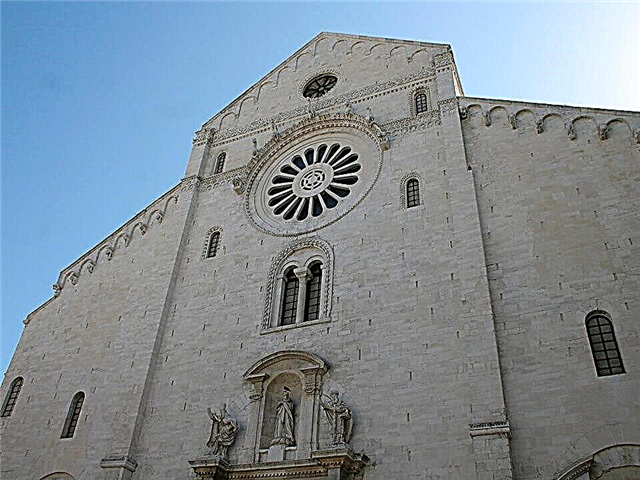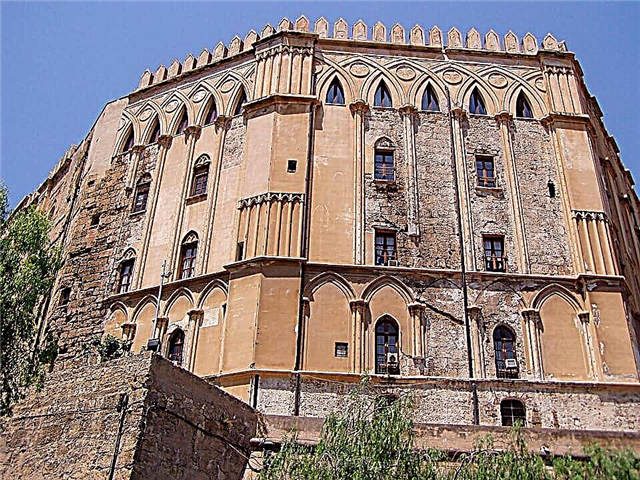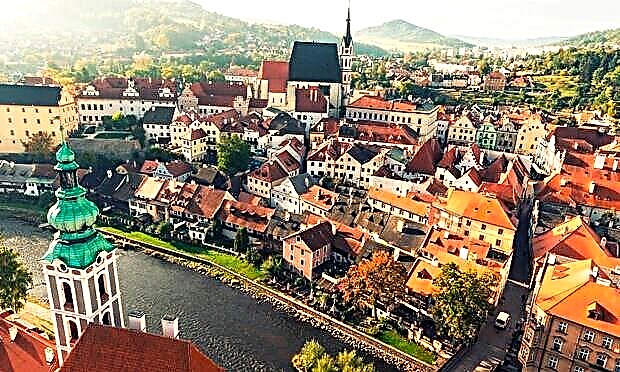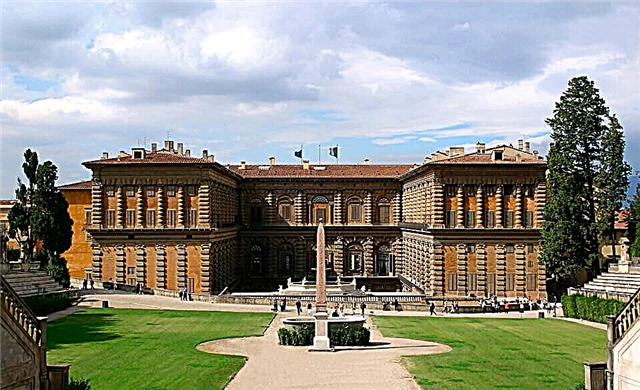Italy, with its fortified cities, is raising the thickness of the walls of the citadel of science, art and aesthetics in its purest form. Florence with luxurious palaces, Rome with a high pathos of religious artifacts, an old friend of Milan with its amazing scientific delights - each of them is worth visiting, each of them is worthy of admiration, graciously endowing each of its guests with a slightly tart scent of real history. Let's talk about the most interesting museums in Italy.
Juliet's house in Verona

A pompous love story set in broken glass, because the first love cannot but end sadly, and in relation to the immortal lovers - Juliet and Romeo, Romeo and Juliet - it had to be finished also tragically. This often happens with stories like these, too alive, or revived at the behest of thousands of inspired fans. So, in Verona, a prototype was discovered, or rather, a carefully selected reconstruction of the very house of Juliet - the house of the Capello family.
The house itself is not so large in size, but it perfectly conveys the poetics of medieval architecture. True, most tourists are attracted by the architectural delights not mentioned, but only one element of Juliet's house - the very balcony and courtyard that adjoins it. As you know, it was here that the fatal recognition for both young people sounded. Juliet is also present on the stage, but already cast in bronze and frozen in the idle splendor of youth.
Today, a visit to Juliet's house is free, which cannot but please the guests of Verona, but this is on condition that the guests of the mansion do not want to use the services of a guide, which will cost six euros. Tours run all week - from half past nine until almost eight o'clock in the evening. Only on Mondays the starting time of the excursion visit is shifted to the afternoon.
Doge's Palace in Venice

Amazingly, for more than six hundred years, a cult building in many respects - the Doge's Palace - has become a haven for most state institutions of a higher order that proclaimed democratic and humanistic ideas, although far from the most democratic institutions, for example, have managed to accommodate at its lower levels. Secret police.
But the history - complex and confusing - remains on the conscience of the guides, but everyone, even an unprepared guest of this place can enjoy the beauty and uniqueness of the Palazzo Ducale, which is a visualization of honors and tributes to European-style Gothic, the Byzantine style, openwork of classicism - real poetry in sculptures. bas-reliefs and colonnades. Numerous halls are not inferior, hiding behind this splendor and almost overshadowing it. Suffice it to recall the Hall of Maps, whose walls are richly draped with examples of artistic passion for cartography.
The Doge's Palace operates on a somewhat "split schedule". The first half of the year - as a rule, from March to October - allows visiting the complex from half past nine to seven in the afternoon, while the second half of the year reduces visiting hours - only to half past five noon. The entrance ticket price ranges from nineteen euros.
Uffizi Gallery in Florence

Florence with its Arno River and Paris with its capricious Seine are the only admirable comparisons possible, as are those architectural ensembles in whose glittering glass the lights of the river are reflected. And the Uffizi Gallery as the brightest of all Florentine "lighthouses". In this place, real power and the same true love for art met extremely successfully, giving rise to one of the most ambitious and fanciful works of the architectural world.
The Uffizi Gallery is striking, stunning and does not let you take your eyes off yourself, which is not surprising, because its creation is associated with the Medici family, whose name has long been synonymous with wealth and generosity. Back in the sixteenth century, Cosimo Medici conceived the construction of an ensemble, under whose vaults the main state institutions of Florence of those days would be collected, and therefore these very vaults were supposed to popularly tell everyone about the power of the free city.

The gallery acquired its modern look not only through the efforts of the architect who created this monumental project, but also through the efforts of the Medici themselves, who, over several centuries, transported their main artistic objects of pride to the Uffizi. Gradually, the collected collection expanded, so that today it appears in all the splendor of the skill of Michelangelo, Rembrandt, Raphael, Botticelli and even Aivazovsky.
The gallery is open from eight in the morning until almost seven in the evening, however, usually you have to leave much earlier to visit it, as the crowd of thirsty tourists, ready for any queues, maintains a stable density. It is also worth remembering that the Uffizi Gallery is closed on Mondays, as on the most significant public holidays. Ticket prices rarely exceed eight euros, while children can enter for free.
Palazzo Vecchio in Florence

Florence is literally permeated with thin ribbons of time - you just have to reach out and your fingertips will hesitantly touch the powerful stonework that appeared through the efforts of the thirteenth century masters. It was these very distant masters who built the Palazzo Vecchio, which today claims the status of the main architectural pearl of Florence. Despite the fact that the initially colossal castle complex was erected for state needs, it took its more complete form only three centuries later, when Cosimo Medici, a man with a delicate taste and a thick wallet, became the owner of the castle.
It was he who gave a new name to this place, calling it "old" and gradually turning it into a kind of treasury for the Medici family relics. It was these relics that became the basis of one of the richest exhibitions of art objects in the world, although some equally valuable exhibits came here closer to the beginning of a new page in the history written by mankind. For example, the old "friend" of Michelangelo - perfect in its proportions "David". Palazzo Vecchio is open to guests from Friday to Wednesday, starting at nine in the morning until seven in the evening. On Thursdays, visits are limited to only two in the afternoon. Nonetheless, this place is well worth the time it will take to get to know its collections more fully. The ticket price will not exceed seven euros.
Archaeological Museum of Verona

One of the most brilliant Roman scenes was in Verona, and its lights, contrary to previous data, did not fade with the sunset of the happy star of the Roman Empire and the dominance of "barbarian culture". This stage simply turned out to be cluttered with houses and churches, which grew from year to year, burying ancient foundations under them. Only by the twentieth century, layer by layer, these superstructures began to be removed, clearing the true face of this place. The artifacts found in the course of these studies have become part of the exposition of the Archaeological Museum of Verona, spread out on the top of a hill, abutting the sloping slopes against the stone pillars of the bridge and the old city.

Located in the former building of the monastery, whose patron saint is Saint Jerolamo. Of course, such a successful placement leaves a certain imprint on the look and atmosphere of this place - the old Italian monasteries cannot but have a kind of magnetic effect on everyone who finds himself under the high vaults.It is also worth noting that the exposition is not only artifacts found throughout Verona during excavations - and many such things were discovered, and sometimes unintentionally - but also larger-scale elements, for example, a church that was located on the territory of the monastery. Today, the building itself and the interior design are part of the museum.
The Archaeological Museum of Verona is ready to welcome visitors on all days without exception, with the only clarification that on Monday work is shifted to the afternoon. The maximum ticket price is six euros, and there is a special discount system for group visits.
Vatican Library

The Vatican is a tiny piece of land by the standards of the globe, in which, for more than a dozen centuries, quite impressive power has been concentrated, not even on the scale of the globe. This place has always had its secrets - and it could not but have them. One of these secrets has remained for a long time, and even now the Vatican library partially remains. The Apostolic Library is a reliable repository, where behind heavy doors are ancient scrolls and manuscripts, handwritten and rewritten books from the dark Middle Ages, when the Vatican was almost at the peak of its power, tomes from the Renaissance, which are of considerable scientific and artistic interest.
All this is housed in richly decorated halls that amaze with the complexity and skill of the wall painting and the beauty of the ceiling painting. True, not all halls are open to the public today, and those that are available will be of interest not to idle tourists making a colorful tour of sunny Italy, but to scientists, professors and their students who are ready to work and appreciate the materials that end up in their hands.
Accademia Gallery in Venice

Venice is the very city of half-forgotten fairy tales heard in childhood through a dream, the city of beautiful women, water canals and masquerades, the city of artists, philosophers and scientists who are ready to decorate this blessed land and glorify it. The Academy Museum or, as it is now more commonly called, the Academy Gallery, belongs to the former main "springboard" for training young artists, ambitious and talented enough to challenge high art. True, gradually the Academy itself turned rather into a museum, in whose halls canvases by Venetian masters and representatives of other schools are exhibited today in a completely disordered sequence.
Located in the buildings of a former monastery, built in the fifteenth century on the banks of the Grand Canal, the Academy Gallery is always surrounded by a motley set of tourists who are ready to stand in line for many hours and get the right to personally see the mastery of Titian, Bellini, Tintoretto. On all days, except Mondays, when the museum has a short day, you can stay in the halls of the Academy Gallery until seven in the evening. A ticket for one person will cost fifteen euros, but do not forget about special discount systems and so-called free days. For example, on Valentine's Day, the aforementioned couples in love can walk through the elegant halls for free.
Accademia Gallery in Florence

Many Italian buildings are associated with the name of Cosimo Medici, which have become iconic and have not lost their splendor, despite their more than decent age. A man who has a keen sense of art and is ready to pay the real price for it, it was he who founded at the end of the sixteenth century, perhaps the first educational institution of an artistic profile in Europe with a powerful academic background. It was at the Academy that the Gallery opened, forcing today to freeze in mute admiration, one has only to step over the ancient threshold, however, then it was opened rather not as a museum, but as an exhibition hall, in which the works of students and their senior teachers who created their masterpieces were supposed to be exhibited to the glory of the picturesque and noisy Florence in all its diversity of scenery.
It is not surprising that the modern exhibition consists mainly of those very works of the fifteenth and sixteenth centuries, bringing together Bronzino, Ghirlandaio and Lippi under one shade. The gallery starts at eight in the morning and ends after six. The maximum ticket price is sixteen euros.
Museum of Science and Technology Leonardo da Vinci in Milan

It is typical for Italy to locate museums in material monuments of history and culture, for example, on the territory of former monasteries or palaces, as if including them in the circle of a museum exhibition. So it happened with the Museum of Science and Technology, named after one of the most prominent geniuses of scientific and artistic thought - Leonardo da Vinci. He "crawls" far beyond the confines of the monastery of San Vittore, provided to him, continuing exhibitions in street pavilions, constantly replenishing his collection and developing.
I am ready literally from the doorway to captivate each of my - even an accidental - guest, who was previously extremely far from the principles of operation of a steam engine or the intricacies of the operation of astronomical equipment. In each of the respective halls, models are presented - as a rule, in full size, whether they are vintage cars or submarines - which will help to clarify the algorithm of their work. Do not forget about one of the most remarkable museum halls - the very concentration of the engineering and mathematical genius Leonardo da Vinci, which presents some models of his unique devices, collected from the scientist's personal notes. It is better to familiarize yourself with the work schedule on the official website immediately before visiting, as it changes from time to time. You can talk more calmly about the prices for visiting - the cost of tickets does not exceed ten euros.
Vatican Museum Complex

The Vatican is a treasury of treasuries, the main decoration and the main mystery of Rome, a giant colossus whose body over the past centuries has become more and more, bristling with new buildings and fortress walls. True, today it is already becoming clear that it has not grown enough, since all those cultural and religious relics that are stored today on its territory are no longer placed on this very territory. The modern complex of the Vatican includes a number of independent museums, which collect collections from different eras and belonging to different cultures. Most of all admiration is traditionally caused by the Egyptian hall, where artifacts related to the twenty-first century BC are collected, but this is only the beginning, because other museums contain treasures - it is difficult to name these exhibits in another way - glorifying ancient art, high art of the Renaissance and even relatively modern works.

In addition to the museums themselves, the Vatican complex also includes the buildings of several chapels, among which, of course, the Sistine Chapel stands out. To visit the Vatican complex, you will have to spend at least two to three days, even taking into account the fact that a program for visiting only certain elements of the complex will be developed in advance. In any case, whichever of the halls the Vatican visitor would not want to visit, the ticket price, valid throughout the complex, will be only sixteen euros.
Palazzo Pitti in Florence

Italy has always been firmly bound by the finest silk of intrigue, bribery and fraud, as well as bloody murders and extremely mysterious stories in which revenge, envy and passion became the main centripetal of the whole action. This is how one of the richest palaces in Florence, the Palazzo Pitti, appeared, connected, oddly enough, with one of the most influential people of his time - with Cosimo Medici, or rather with the envy that he caused with his wealth in the heart of one of his own favorites.The idea was simple to the point of genius - to build a structure that will be able not only to eclipse, but to eclipse forever, the splendor of the Medici residences. Unfortunately, this desire was not destined to become a reality - the Pitti family did not manage to complete the construction, and the family's power gradually faded away.

In its modern form, this colossal structure has come down to us thanks to the numerous reconstructions that the palace underwent at different times. These renovations affected not only the building itself, but also the vast park area that is located behind it, creating one of the most perfect, in terms of landscape design, gardens in Italy - the Boboli Gardens. But they are not the only ones that attract tourists. On the territory of the Palazzo Pitti there are a number of independent institutions, each of which works according to its own schedule and sets its own prices for entrance tickets, which is not always convenient. Nevertheless, those wishing to see the work of Van Dyck, visit the real Medici treasury or marvel at the intricacies of porcelain products are always found, despite such minor inconveniences.
Royal Museum of Cattolica
It is hard to believe, but in a rather unremarkable building, squeezed between neighboring houses, there is an archaeological museum with a rather rich exposition. This building is in fact the former premises of the Pilgrim's hospital, and the mentioned one has the status of the Royal Museum of Cattolica.
Despite its rather modest size, it managed to accommodate two almost independent halls. The first is devoted to purely historical artifacts, whose age dates back to the first centuries of our era and younger. The second one is completely devoted to maritime affairs in all its possible interpretations: numerous models of ships, old maps and images, documents and in-flight magazines.

Perhaps the most important for foreign tourists are two points: the possibility of free admission all year round with no admission fees and the availability of summer - again free - tours, which are conducted in two languages - Italian and English proper.











